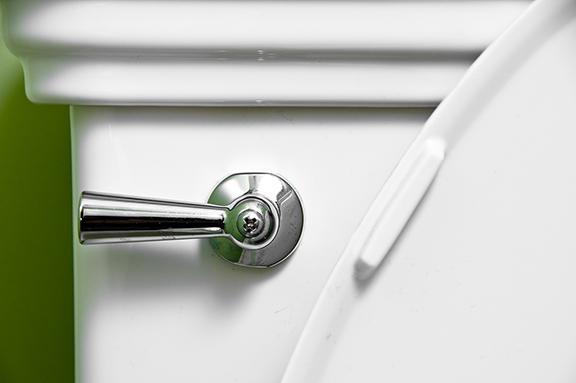Trying to put a lid on your household water consumption? Think toilets. Your toilets are among the top water consumers in your house, responsible for more than 30% of the water you use. If your home has an old toilet, it makes sense — economically and environmentally — to replace it with a high-efficiency toilet, which can dramatically lower your water usage and lower your water bills.
The main hurdle: Don’t let the misconceptions — that low-flow toilets clog or are too expensive — stop you from installing and reaping the benefits of high-efficiency toilets in your home.
They’ve come a long way
Water-efficient toilets have evolved significantly since the 1994 Energy Act (H.R. 776) was put in place. Gone are the first-generation of low-flow toilets, infamous at the time for their less than impressive flushing capabilities. They’ve been replaced by a new breed of high-efficiency toilets that make it easy for you to comply with federal energy and water efficiency standards.
Toilets predating the federal restrictions of 1.6 gallons per flush are especially inefficient. These older, inefficient toilets use as much as 6 gallons per flush and are a major source of wasted water in many homes. Recent advancements have allowed redesigned high-efficiency toilets to use 1.28 gallons per flush or less while still providing equal or superior performance.
Clearing up the misconceptions and myths
Unfortunately, early adopters who jumped on the water-conservation bandwagon and rushed out to buy high-efficiency toilets in the 1990s, in many cases felt they’d literally flushed money down the drain. The good news is the technology has come a long way, clearing up the outdated myths that still might make you hesitant to install today’s eco-toilets. Outdated myths about these high-efficiency toilets include claims that they:
- Cause problems with home plumbing systems
- Are too expensive
- Aren’t available in updated designs
Benefits of water-efficient toilets
By replacing your old, inefficient toilets with new high-efficiency models, your family can reduce indoor water usage by 20% to 60%. That’s nearly 13,000 gallons of water savings for your home every year, which could save you more than $110 per year and $2,200 over the lifetime of the toilets.
If all of the high-water-using toilets in the United States were replaced with these new models, collectively we could save 520 billion gallons of water per year, or the amount of water that flows over Niagara Falls in about 12 days.
What are your options?
The U.S. Environmental Protection Agency’s (EPA) WaterSense program is full of information about water-efficient toilets. Water-efficient toilets that are certified by independent third-party testing to meet EPA’s rigorous criteria for both efficiency and performance can earn the WaterSense label. Nearly 2,500 water-efficient toilets currently meet these standards, providing plenty of style and price-point options.
High-efficiency toilets are the latest generation of toilets you’ll find in the market. They have earned this title by using at least 20% less than the current federal standard of 1.6 gallons.
How they work?
Design advances such as larger traps and improved flushing technologies have brought enhanced performance. There are three kinds of water-efficient toilets:
- Single-flush (1.28 gallons per flush (gpf).
- Dual-flush toilets (1.6 gpf/0.8 gpf). These models have buttons or levers that allow you to use one option for liquid waste, another for solid waste.
- Pressure-assist toilets (1.28 gpf). These are equipped with pressure-assist technology and are most commonly found in hotels, offices and public building restrooms.
Tips for buying high-efficiency toilets
- Carry with you some type of research (e.g., consumer magazines) that evaluate water-efficient toilets.
- Your water utility or individual plumbers may also be able to recommend certain models.
- Look for manufacturer guarantees.
- Download a list of San Jose plumbing and supply material retailers selling efficient toilets.
By following these tips, purchasers of water conservation toilets can be fairly assured of getting an efficient model that will save water for years to come.
Looking to learn more about water efficiency? Follow San Jose Water's blog or one of our social media accounts for the latest news and tips.
